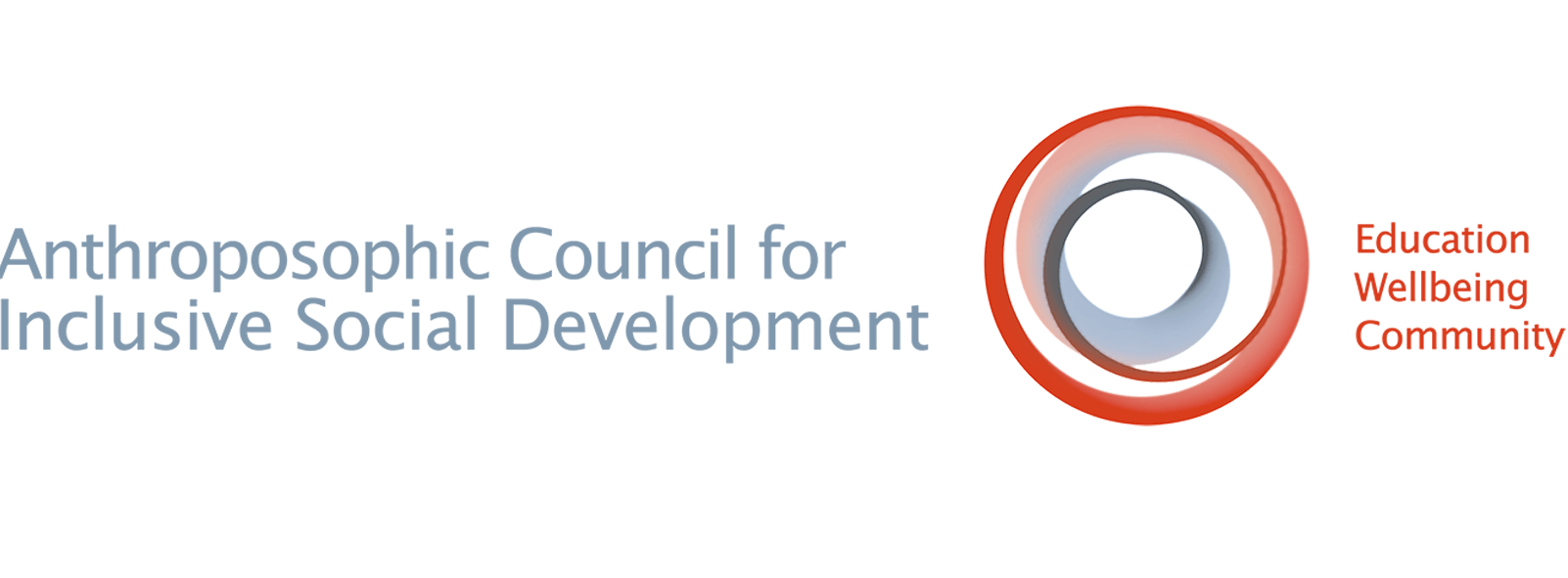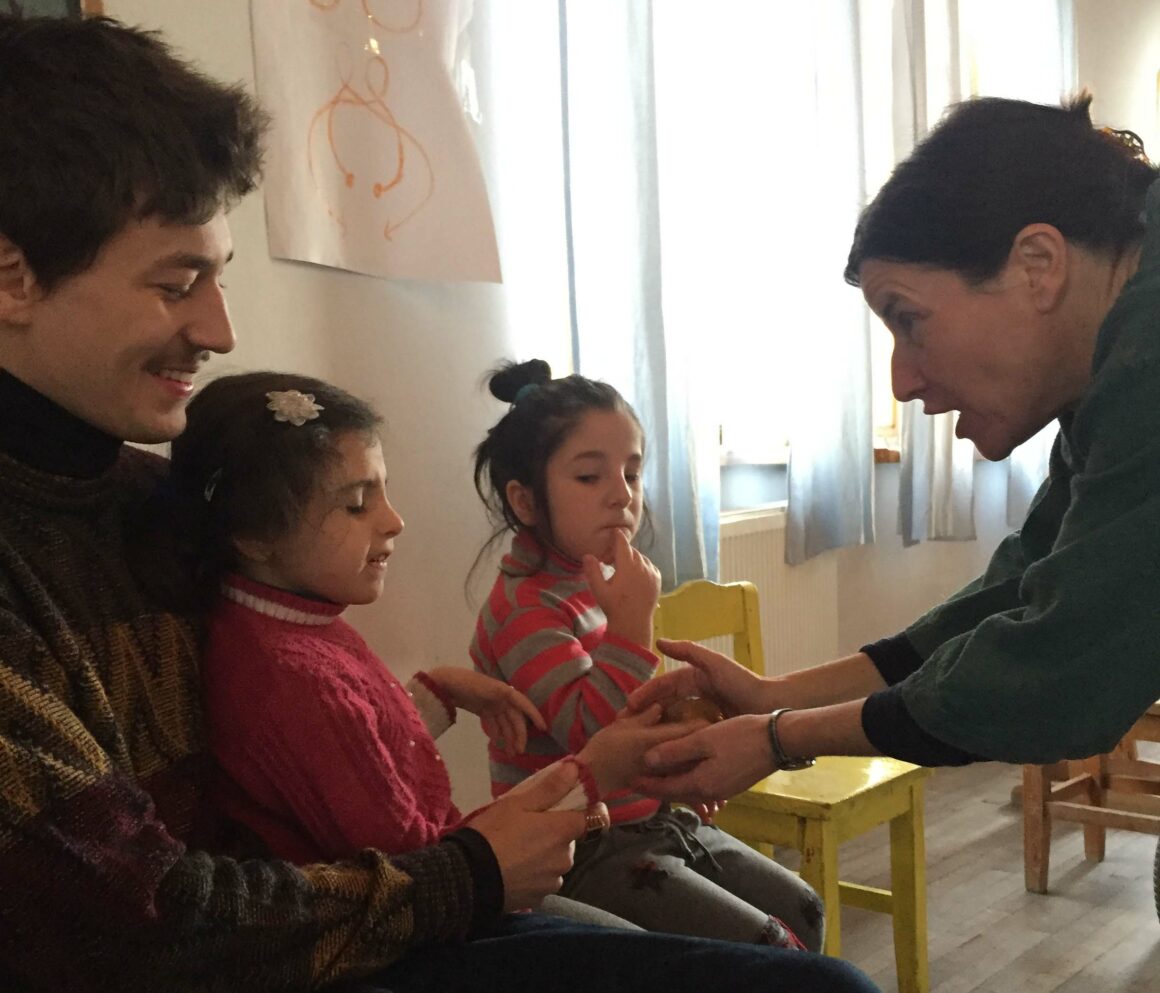Eurythmy in curative education and social therapy
NEW: Certificate Course Eurythmy in Curative Education, Inclusive Education and Social Therapy
Start: May 2023
– Unfortunately cancelled due to not enough registrations –
Practice Manual Eurythmy in Curative Education, Inclusive Pedagogy and Social Therapy
We are creating a digital practice manual by and for experienced, professionally active eurythmy teachers.
Below you will find a first structure of the content.
Behind some headings there are already texts, as PDF to click on.
The contributors of this working group offer their texts as open source.
We are happy if also colleagues who are unknown to us participate and are also motivated to contribute texts from their field of experience.
Up to now the texts are partly in German and in English. If someone enjoys translating, she/he is cordially invited.
Feel free to contact us through Sonja Zausch: s.zausch@inclusivesocial.org
Below you will also find professional articles and master theses on the topic.
If you also have something to contribute yourself, please feel free to contact us.
1. Grundlegendes | Basics
1.1 Was ist anthroposophische Heilpädagogik? | What is anthroposophical curative education?
1.2 Grundlagen des Eurythmieunterrichts in der Heilpädagogik | Principles of eurythmy teaching in curative education
1.3 Beurteilung der kindlichen Konstitution | Assessment of the child’s constitution
1.4 Welche Haltung habe ich als Lehrer:in und Entwicklungsbegleiter:in? | What is my attitude as a teacher and developmental facilitator?
1.5 Was sind meine Fähigkeiten? | What are my abilities?
1.6 Die Selbstschulung und die Kraftquellen der/des Eurythmielehrer:in | The self-education and the sources of energy of the eurythmy teacher
1.7 Der Eurythmieraum in der Schule | The eurythmy room in the school
1.8 Die Rolle der Assistenzkräfte | The role of assistents
1.9 Kommunikation mit dem Sozialraum (Eltern, Sozialämter, …) | Communication with the social space (parents, social services, …)
2. Qualitäten | Qualities
2.1 Eurythmie als Sinnesstimulation, die Wirkung der Eurythmie | Eurythmy as sensory stimulation, the effect of eurythmy
2.2 Die Wirkung von Sprache und Musik | The effect of language and music
2.3 Die Bedeutung der Wiederholung | The importance of repetition
2.4 Die Arbeit mit Gegenständen | The work with objects
2.5 Körper, Raum und Zeit | Body, space and time
2.6 Die Bedeutung der begleitenden Heileurythmie | The importance of the accompanying eurythmy therapy
3. Methodik und Didaktik | Methodology and Didactic
3.1 Kleinklassen | Small classes
3.2 Methodik und Haltungen in der Kleinklassen-Schule | Methodology and attitudes in the small class school
3.3 Reine Klassen mit Kindern mit Assistenzbedarf | Classes in schools for curative education
3.4 Gruppen mit Kindern im Rollstuhl | Groups with children in wheelchairs
3.5 Sozialtherapie und Menschen mit psychiatrischen Erkrankungen | Social therapy and people with psychiatric disorders
3.6 Menschen mit Schwerstmehrfachbehinderungen |People with severe multiple disabilities
3.7 Eurythmie mit Menschen, die nicht imitieren oder nachahmen können | Eurythmy with people who cannot imitate or copy
3.8 Eurythmie vorführen | Performing eurythmy
3.9 Vorführung der Lehrer:innen | Demonstration of the teachers
4. Übungen | Exercises
4.1 Fokussierung und Embodiment | Focus and embodiment
4.1.1 Achtsames Atmen | Mindful Breathing
4.1.2 B-Übung | B exercise
4.1.3 Konzentrationsübung | Concentration exercise
4.1.4 Steiner – Standhaft stell ich mich ins Dasein | Steiner – I place myself steadfastly into existence
4.1.5 Vier Elemente-Meditation | Four elements meditation
4.1.6 Vom Himmel zum Erdmittelpunkt und zurück | From heaven to the center of the earth and back
4.2 Bewegt und sportlich | Moved and sporty
4.2.1 Spaziergang | Walk
4.2.2 Wanderung | Hiking tour
4.3 Geometrie und Raumgefühl | Geometry and spatial feeling
4.3.1 Raumgeometrie | Spatial geometry
4.3.2 Von der Lemniskate zum Kleeblatt | From lemniscate to cloverleaf
4.4 Der «Buchstabenkreis» | The «Circle of Letters»
4.5 Marjatta DE | EN
4.6 Tonstärke-Therapie | Trumpet Therapy
4.7 Hörraumtherapie | Listening Space Therapy
4.8 Hörraumtherapie als Gruppentherapie | Listening Space Therapy as Group Therapy
4.9 Farbige-Schatten-Therapie | Colored Shadow Therapy
4.10 Gruppen-Toneurythmie | Group tone eurythmy
Professional articles and master theses for download
1. Nora von Baditz: Über die Pädagogische Eurythmie für Unterrichtende (German)
2. Martin Niemeijer/Erik Baars: Bild-gestaltende Diagnostik der kindlichen Konstitution (German)
3. Martin Niemeijer MD: From Special Needs to Realizing Your Full Potential (English)
4. Martin Niemeijer MD: Van beperking naar ontwikkeling (Dutch)
6. Ute Heuser: A way to touch – Masterarbeit (English)
Current report, April 2021
Through the travels of Sonja Zausch, member of the leadership team of the Anthroposophic Council for Inclusive Social Development and eurythmist (MA), to the most diverse places in the world such as inclusive schools, small classes, curative education special schools and institutions of social therapy, which are connected to anthroposophic curative education, the need for a network for this field became clear again and again. After several calls in various journals, a working group was formed, among others during the digital conference of the Section for the Performing Arts at the Goetheanum in Dornach, which took place online from 7–9.4.2021, to address this topic in regular working meetings.
During the conference there was already a lively and open exchange on various topics concerning eurythmy in curative education and social therapy.
In a first step, the focus will be on writing texts and formulating successful exercises, since there is hardly any literature or documented material on eurythmy in curative education and social therapy and thus there is a danger that the treasure of knowledge cultivated over decades will be lost. However, this should not be a matter of pure archiving, but of preserving and making accessible the exercises and experiences, as well as placing them in the current context.
Of course, the materials will be translated into several languages so that as many eurythmists as possible can benefit from them. Topics include:
- The attitude of the eurythmy teacher
- Self-training and sources of energy
- The eurythmy room in the school
- Cooperation with teachers and class facilitators
- Eurythmy as sensory stimulation
- The effect of eurythmy
- The importance of repetition
- Working with objects
- Eurythmy with wheelchair users
- The importance of the accompanying eurythmy therapy
- “Best practice examples” and …
In the future, we would like to make the materials available on the Council’s website as PDF files for anyone who is interested.
It also became clear that there is an urgent need for further training for eurythmists who work in curative education and social therapy, as no attention is paid to this specialist area in any eurythmy training. It is also being considered to design an offer for the undergraduate training courses in the form of an “Introduction to Special Education Day”. The working group will also deal with this and evaluate in which form such an offer can take place and which modules are useful for this.
If you feel interested and would like to participate in the working group, please do not hesitate to contact us.
Moritz Jehle, April 2021
Contact persons:
Sonja Zausch: s.zausch@inclusivesocial.org
Moritz Jehle: m.jehle@posteo.de
Report from February 2021
In spring 2021, a new working group will be formed on the topic of eurythmy in curative education and social therapy.
In order to strengthen and professionalize this field of work, we invite you to a first working group meetingwithin the digital conference of the Section for the Performing Arts:
https://srmk.goetheanum.org/en/veranstaltungen/translate-to-en-konferenz-2021-1
Because the conference has been postponed for a year due to the current situation, there will be a small digital conference from 7–9.4.2021. More information will follow.
The networking workgroup will also be held in digital format and will run from 7.30–21 p.m. on all three days.
Traveling to a wide variety of places around the world with special education such as inclusive schools, small classes, special education schools and social therapy facilities, it becomes clear time and time again that there is a need for a network for this specialty.
We all know that this specialty is not given attention in any training and yet it is a very valuable and heartwarming field of work.
How do you work with movement when you want to create something artistic-pedagogical with people with limited movement and many other abilities?
Our chance of a network work is exchange of experiences, suggestions and working materials for the professional everyday life, perhaps also mutual hospitations. After all, from whom do I learn more than from the colleague who accompanies me with a professional loving eye! Perhaps we could also write a teaching guide through the class levels.
This may result in a strong educational impulse that makes the perception of the job profile more visible than at present. The question about the future and the new generation of the professional field is also getting louder and louder!
Please bring your best practices to this working group so we can practice and learn together. I am looking forward to this exchange!
Contact:
Sonja Zausch
s.zausch@inclusivesocial.org
Mobile (Signal, Telegram and Threema):
+49 173 202 67 97

